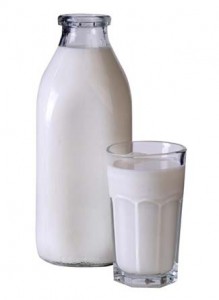Now that I’ve got you thinking twice about the impact of spinach, whole grains, and vegetable oils in your diet, I’m going to keep playing devil’s advocate and uncover the dark side of some more “healthy” foods.
Tofu
 Long a favorite of the vegetarian crowd, tofu is widely praised as a great plant-based source of all essential amino acids, the building blocks of protein. But despite its “pure” image, tofu is one of the most unhealthful products you can find in the grocery store.
Long a favorite of the vegetarian crowd, tofu is widely praised as a great plant-based source of all essential amino acids, the building blocks of protein. But despite its “pure” image, tofu is one of the most unhealthful products you can find in the grocery store.
It all starts with soy, the legume from which tofu is made. Along with corn, soy is the basis of many of the genetically-modified industrial frankenfoods that find their way into almost every boxed, canned, or bagged product you find in the grocery store.
Due to the amount of processing necessary to make raw soybeans palatable, they, like all beans, were a minor part of our diet during the millions of years it took us to evolve. It was only with the advent of agriculture that human consumption of beans began to take off, and if you take into account all the products made from this versatile bean, it may very well be the most consumed bean in modern society.
Now, just because a certain food wasn’t consumed much before agriculture took hold doesn’t mean it should be avoided. (Wine, cheese, and dark chocolate are a few personal favorites that don’t fit this criterion.) But the health consequences of soy are too drastic to be ignored. Unfermented soy products (such as tofu and edamame) have been shown to impair thyroid function and contain enough phytoestrogens to make testosterone levels plummet. If you need any more convincing, they also contain large amounts of phytic acid, the same compounds found in whole grains that impair nutrient absorption.
If you’re looking for protein, you can do a lot better than tofu for nutrition. Grab a steak, a roast, or some eggs. Your testosterone will thank you.
Agave Nectar
 We humans sure love our sweets. Once sugar was outed as one of the most damaging parts of the modern American diet, we went gangbusters trying to find artificial but wholesome sweeteners to take its place. Saccharin to aspartame, sucralose to stevia, our addiction to sweet stuff is something that won’t be going away any time soon.
We humans sure love our sweets. Once sugar was outed as one of the most damaging parts of the modern American diet, we went gangbusters trying to find artificial but wholesome sweeteners to take its place. Saccharin to aspartame, sucralose to stevia, our addiction to sweet stuff is something that won’t be going away any time soon.
This dependency is something that likely served us well a long time ago when the only foods we could get a hold of that satiated our sweet tooth were fruits (which would have only been available during the short time they were in season) and the occasional beehive.
The compound sucrose (or table sugar) consists of a molecule of glucose bonded to a molecule of fructose. Glucose is immediately released into the bloodstream and the body releases a temporary spike of insulin in order to neutralize it. Modern health advice has focused on the problems involved with excessive glucose consumption instead of those involved with fructose consumption for one reason: it is much easier to measure. With the advent of cheap and reliable blood glucose meters, people have become much more cognizant of the importance of increasing insulin sensitivity, or reducing the intensity and duration of the insulin spikes that occur after eating.
Fructose, once ingested, is shuttled to the liver to be broken down as though it were a toxin. Excessive fructose consumption has been found to damage the liver and lead to chronically elevated insulin levels, the environment in which fat is stored in the body.
And here’s where we come to agave nectar. Touted as a “natural sweetener,” the reality is far from it. Agave nectar is a modern food product created in the 1990s requiring a massive industrial process in order to extract and purify the “nectar.” The resulting syrup has only a minute amount of glucose, which has led to it being labeled as “healthy” since it has a low glycemic index and does not raise blood insulin levels.
However, the remainder of the sugar found in agave nectar is fructose, the very compound that drives insulin levels upwards. Agave nectar contains MUCH more fructose than the rightly vilified High Fructose Corn Syrup and should be avoided whenever possible. Although all sweeteners should be limited in order to increase insulin sensitivity, if you absolutely need your fix you are best off going with honey, maple syrup, or molasses, which at least have some vitamins to their credit.
Milk
 Most were raised thinking of milk as an essential part of the human diet. Without it, the theory goes, we don’t get enough calcium and our bones become brittle and break easily. But the truth is a bit more complex than that.
Most were raised thinking of milk as an essential part of the human diet. Without it, the theory goes, we don’t get enough calcium and our bones become brittle and break easily. But the truth is a bit more complex than that.
Like grains and legumes, dairy is a relative newcomer to the human diet.
Okay, so we ARE designed to thrive on our mothers’ milk during childhood, but no other animal drinks milk past infancy, much less the milk of another mammal! It wasn’t until quite recently, when we started domesticating cows and goats, that dairy started to play a large role in the human diet.
The problem with dairy comes primarily from lactose, the sugar found in it. Worldwide, more than half of all people are lactose intolerant, which means they lack the enzyme necessary to break down this sugar. This can lead to bloating, cramps, or even vomiting. (Hardly helps to promote milk as an essential food if most people are unable to drink it.)
But before you go dump all your dairy products there IS a way to safely incorporate them into your diet. Many traditional cultures, although they are lactose intolerant, have found ways of drastically reducing the amount of lactose in their dairy so they can safely consume them. These methods involve culturing and fermenting the raw milk.
Cultured butter, cream, yogurt, cheese, and kefir are all ancient methods of preparing milk that improve digestibility and nutrient bioavailability. Even if you are lactose intolerant, adding small amounts of these dairy products into your diet will likely prove to be beneficial.
Constructive Criticism
The question of what to eat and what to avoid is complex and doesn’t have many easy answers. If we put a critical eye on what the “experts” are suggesting, we will come away with a much better understanding of what we are putting in our bodies. Let me know in the comments if you know of any other unhealthy “healthy” foods, or if you think I’m completely off-base!
 I'm a science geek, food lover, and wannabe surfer.
I'm a science geek, food lover, and wannabe surfer.
{ 3 comments }
Darrin,
For me, diet is one of the hardest things to get straight. I can lose weight and get great abs by dieting or intermittent fasting, but I still wonder if I am eating healthy enough. It seems like it is a full time job sorting out what we should eat and what we shouldn’t! Thanks for the post, you are very detailed as to why foods are good or not. This is helpful for someone like me that knows what works, but not so much why it works.
I’m with that… Down with tofu, my rule is if it was “Made” somewhere rather than grown, then its no good for you,., real food only!
Yeah, food from farms, not factories! I find it interesting that every legitimate diet has one thing in common: they all stress the importance of natural, fresh foods rather than processed food products. Whether you are paleo or vegan, I think this is the most important thing you can incorporate into your diet.
Comments on this entry are closed.